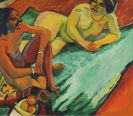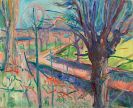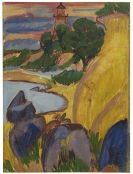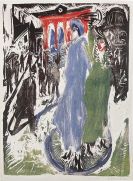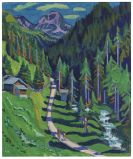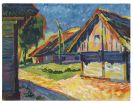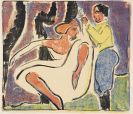
Hermann Hesse
Calw
1877 -
Montagnola
1962
Hermann Hesse was born on July 2, 1877, in Calw, Württemberg. Hesse lived in Basel beginning in 1904 after having dropped out of the seminary at the Maulbronn monastery and finishing his training as a book dealer. In Gaienhofen am Bodensee, he worked as a professional writer and for many newspapers.
The novels "Peter Camenzind" (1904) and "Unterm Rad" ("Beneath the Wheel"; English title: "The Prodigy" 1906) belong to the first publications in his extensive catalog of creative works. In these works, Hermann Hesse thematized the conflict between intellect and nature, a theme which pervades his whole catalog. He left Germany in 1912 and resettled in Bern and from 1914 to 1919 composed numerous political essays and open letters against the war which were published many German and Swiss newspapers.
Hermann Hesse, who had become a Swiss citizen in 1923, was a foreign member of the Prussian Academy of the Arts from 1926 until 1931. He moved to Montagola in 1931, where he lived and worked until the end of his life. His works were considered objectionable in Germany during the years of World War II.
Hesse received the Nobel Prize for Literature in 1946 and the Peace Prize of the German Book Trade in 1955. Besides his numerous poems, stories, essays, and treatises, Hesse's literary fame comes mainly from his novels, which include "Demian" (1919), "Siddarta" (1922), "Der Steppenwolf" (1927), "Narziss und Goldmund" (1930), and "Das Glasperlenspiel" ("The Glass Bead Game" 1943).
His prose as well as his poetry, which tend to be nostalgic, often maudlin, and folksong-like, show Hesse as a epigonal-harmonizing descendent of the Romantics.
Hesse died on August 9, 1962, in Montagola, Switzerland.
Would you like to sell a work by Hermann Hesse?
Infos for seller
